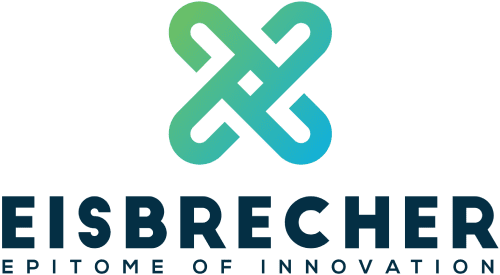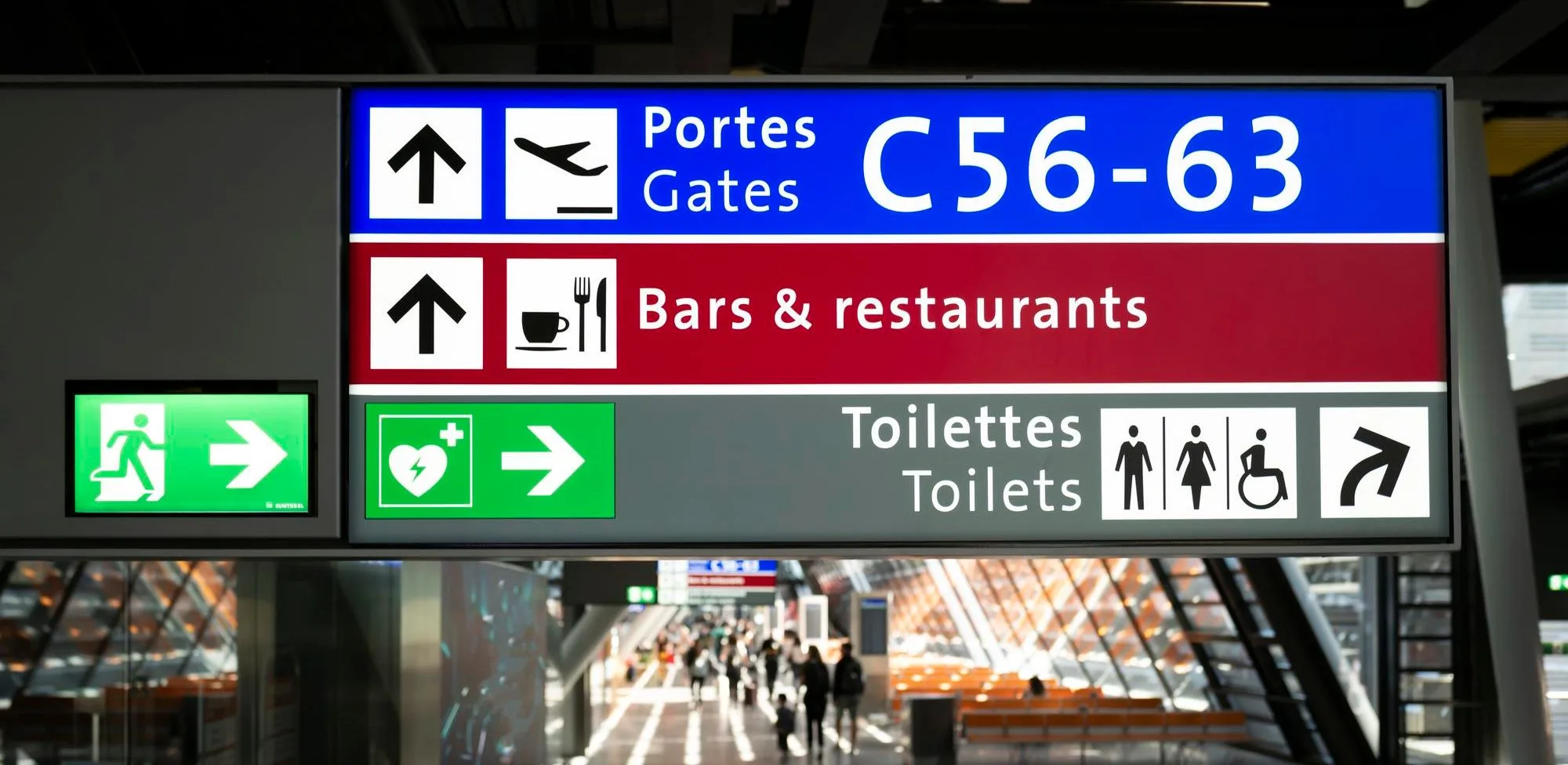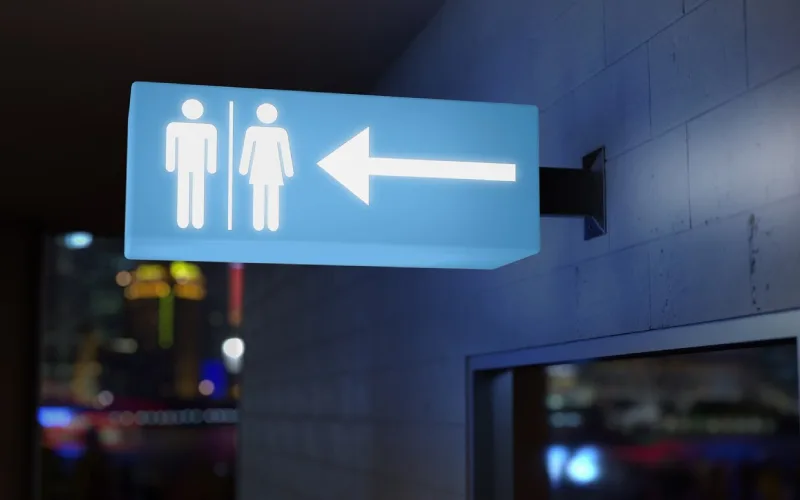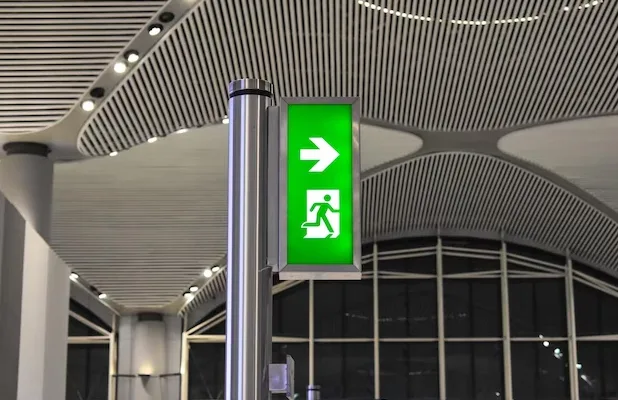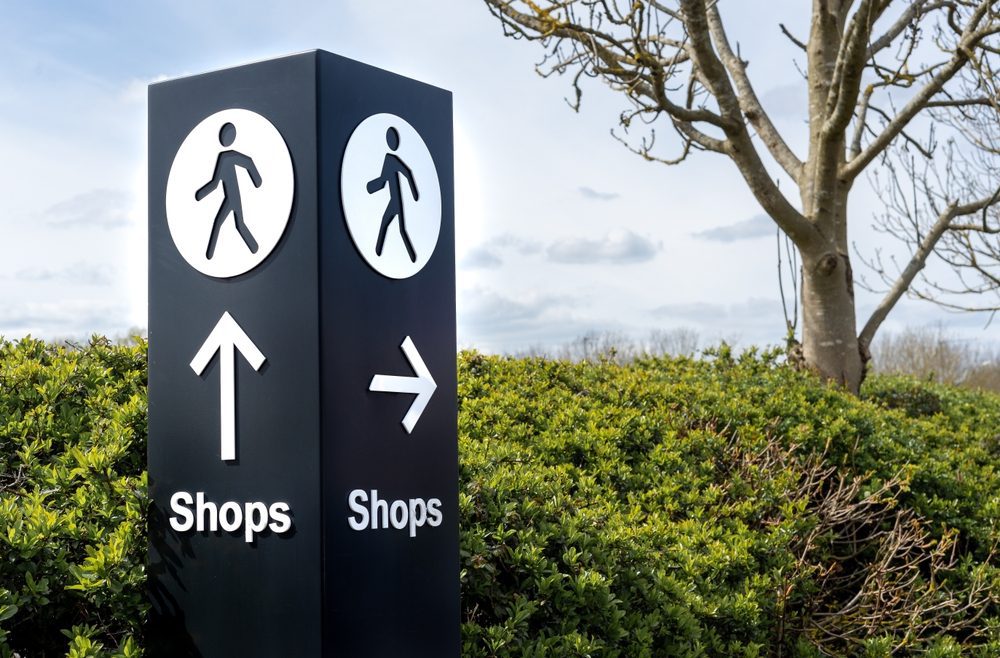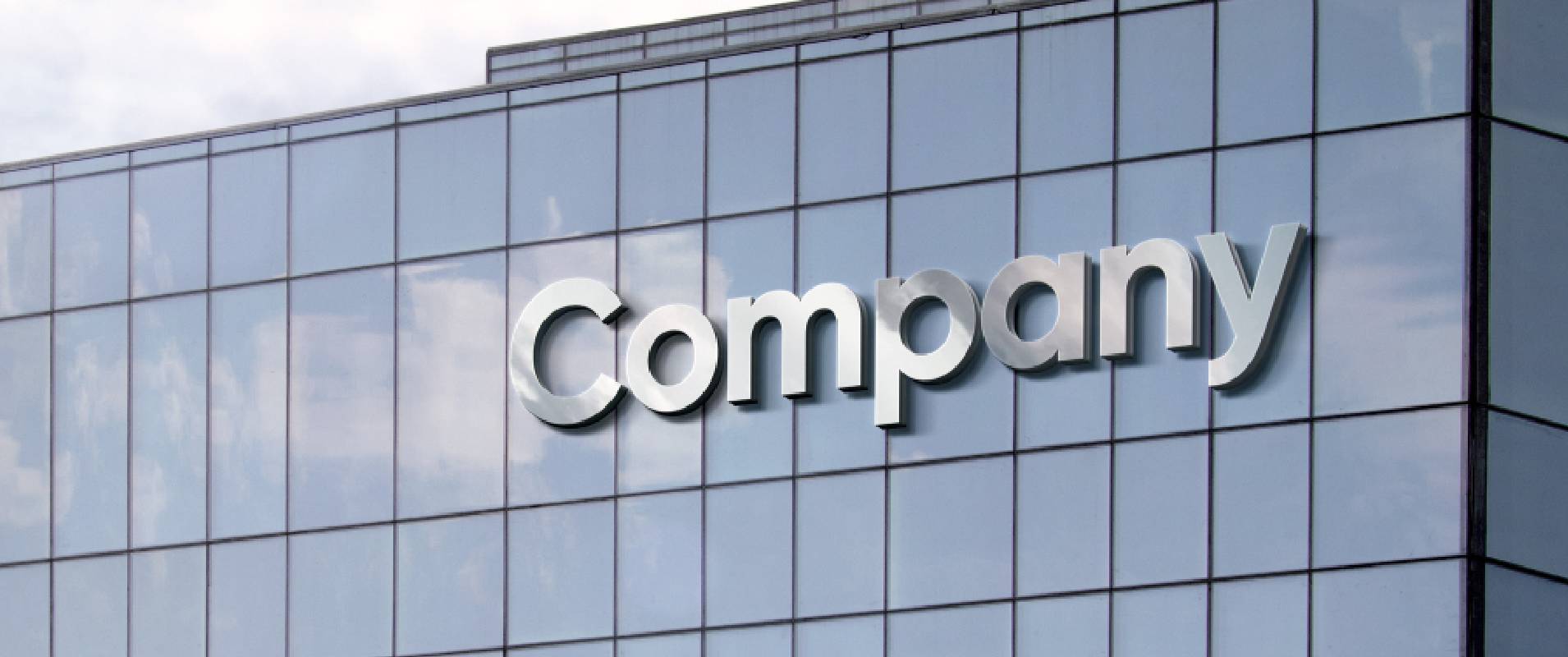Navigating an unfamiliar space can be a frustrating and time-consuming affair. Whether it’s a sprawling shopping mall, a complex hospital, or a labyrinthine university campus, getting lost can quickly sour any experience. But fear not, weary traveler! There is a silent hero lurking in the shadows, ready to guide you to your destination with grace and efficiency: wayfinding signs.
In Qatar, a country undergoing rapid development and boasting architectural marvels at every turn, the need for effective way-finding solutions is more prominent than ever. With its bustling cities and growing infrastructure, can feel like a labyrinth at times. Navigating through malls, airports, or even universities can become frustrating, especially for visitors or new residents. This is where the magic of wayfinding signs comes in. These silent guides not only help people find their way but also enhance the overall experience of a space.
What is a Wayfinding Sign?
A wayfinding sign is a type of signage designed to help people navigate a physical space. They provide clear and concise information about directions, locations, and points of interest, making it easier for visitors and users to find their way around. Wayfinding signs are essential for any large or complex space, such as airports, hospitals, shopping malls, universities, and even corporate offices.
The main purpose of wayfinding signs is to provide clear and concise directions to help people find their way to their destination. They can also be used to identify locations, provide information about amenities, and warn people of potential hazards. They can be found in a variety of places, such as:
- Public spaces: Airports, train stations, hospitals, shopping malls, museums, parks.
- Commercial buildings: Offices, hotels, universities, corporate campuses.
- Residential areas: Apartment complexes, gated communities.
Wayfinding signs can be simple or complex, depending on the environment they’re in. In a simple environment, like a small store, there may be just a few signs pointing to the checkout or the restrooms. In a more complex environment, like a large hospital, there may be a whole system of signs that help people find their way to different departments, doctors’ offices, and other facilities.
Effective wayfinding signs are clear, concise, and easy to understand. They should be placed in logical locations where people are likely to see them. The best wayfinding signs are designed to blend in with the environment and not be an eyesore.
Importance of Effective Wayfinding Signs in Qatar
Wayfinding signs serve a dual purpose: they provide clear directions to individuals unfamiliar with their surroundings while also reinforcing a sense of place for those already familiar with the area. These signs are strategically placed at key locations such as airports, shopping malls, educational institutions, and public spaces to facilitate efficient navigation.
1. Enhancing Visitor Experience:
One of the primary benefits of effective wayfinding signage is its ability to enhance accessibility. In Qatar, a diverse society welcomes people from various cultural backgrounds and languages. By incorporating multilingual signage, these wayfinding systems cater to both locals and tourists, breaking down language barriers and ensuring inclusivity for all.
- Stress-free Navigation: Imagine the frustration of wandering aimlessly, map in hand, searching for the Museum of Islamic Art. Effective signage points the way, reducing stress and allowing visitors to focus on enjoying the journey.
- Accessibility for All: Multilingual signage caters to a diverse audience, ensuring inclusivity and making everyone feel welcome. Clear pictograms and symbols further bridge language barriers, assisting visually impaired individuals.
- Discovering Hidden Gems: Discreet yet informative signs can lead visitors to unexpected treasures – a charming local souq, a hidden art gallery, or a breathtaking viewpoint. This adds a layer of serendipity to their exploration, fostering a deeper connection with the city.
2. Building a Positive Brand Image:
- First Impressions Matter: Well-designed, consistent signage reflects positively on Qatar’s image as a modern, organized, and visitor-friendly destination. It conveys professionalism and attention to detail, setting the stage for a memorable experience.
- Cultural Showcase: Incorporating traditional Qatari motifs or Arabic calligraphy in signage adds a touch of authenticity and cultural sensitivity. This subtle nod to heritage resonates with visitors and deepens their understanding of the country.
- Promoting Local Businesses: Clear signage directing visitors to local shops, restaurants, and cafes supports the Qatari economy and fosters a sense of community. It encourages interaction with locals, enriching the visitor experience and promoting cultural exchange.
3. Optimizing Infrastructure and Resources:
- Reduced Traffic Congestion: Efficiently placed directional signs can ease traffic flow by guiding drivers towards their destinations, minimizing confusion and unnecessary detours. This translates to lower emissions and a more sustainable environment.
- Emergency Preparedness: Clear signage for emergency exits and evacuation routes plays a crucial role in ensuring visitor safety and security in case of unforeseen circumstances.
- Resource Optimization: Strategic placement of wayfinding signs reduces the need for printed maps and brochures, saving resources and promoting environmental consciousness.
4. Promoting Safety and Security:
In addition to aiding navigation, wayfinding signs play a crucial role in promoting safety and security within Qatar’s urban landscape. Clear signage not only guides individuals towards emergency exits during unforeseen situations but also assists in locating important facilities such as hospitals, police stations, and fire stations promptly. This promotes a sense of security among residents and visitors alike.
- Emergency signage: Clear and visible signage for emergency exits and fire safety instructions is crucial for ensuring visitor and resident safety.
- Traffic control: Directional signs and lane markings play a vital role in regulating traffic flow, minimizing congestion and accidents.
- Crowd management: During major events or festivals, strategic signage can guide crowds effectively, preventing bottlenecks and ensuring a smooth flow of people.
5. Integration with Technology:
As technology continues to advance at an unprecedented pace, it is imperative that effective wayfinding signs embrace these innovations. Integrating digital displays or interactive maps into traditional signage can provide real-time updates on traffic conditions, public transportation schedules, or even nearby points of interest. By combining traditional methods with modern technology, Qatar can create an immersive navigational experience that keeps pace with its ever-evolving urban environment.
Types of Wayfinding Signs in Qatar:
Wayfinding signs come in all shapes and sizes, each with a distinct purpose. Let’s meet the four main characters in this silent play:
Identification Signs: These are the nametags of the environment, labeling rooms, departments, and landmarks. They help us understand where we are and provide a sense of place. Think of them as the friendly greeters welcoming us to each new area.
Directional Signs: These are the guides, pointing us towards our destination with arrows, distances, and icons. They tell us which way to turn, how far to go, and what awaits us at the end of the path. Think of them as the helpful mapmakers who lay out the journey ahead.
Informational Signs: These are the encyclopedias, providing additional context and details about the space. They might list available services, accessibility features, or upcoming events. Think of them as the informative tour guides, offering insights into the surrounding environment.
Regulatory Signs: These are the rule-keepers, ensuring the safety and smooth flow of traffic. They might indicate exits, restricted areas, or specific behaviors expected within the space. Think of them as the gentle reminders, keeping us safe and mindful of our surroundings.
Key Principles for Effective Wayfinding
Creating impactful wayfinding systems requires a strategic approach and adherence to best practices. Here are some key principles to consider:
- Clarity and Consistency: Use clear and concise language, consistent symbols and iconography, and a limited number of fonts for easy comprehension. Maintain a consistent visual style throughout the space to avoid confusion.
- Hierarchy and Prioritization: Prioritize information based on user needs and the importance of each destination. Use visual cues such as size, color, and placement to guide users effectively.
- Accessibility and Inclusivity: Ensure signs are accessible to people with disabilities by incorporating Braille, tactile elements, and clear visual contrast. Consider incorporating multiple languages and cater to different cultural interpretations of symbols.
- Material and Design: Choose durable materials that can withstand the Qatari climate and ensure optimal visibility under various lighting conditions. Consider the aesthetic integration of signs with the surrounding environment for a harmonious and visually appealing experience.
- Maintenance and Update: Regularly maintain signs to ensure they remain clean, legible, and free from damage. Update information as needed to reflect changes in the environment or layout.
the Latest Trends in Wayfinding Signage
While clear and efficient navigation remains the core of Wayfinding Signage, the industry is constantly evolving, embracing innovative technologies and design approaches to elevate the user experience. Here’s a sneak peek into the hottest trends that are reshaping the landscape:
1. Digital Revolution:
Static signs are taking a backseat to interactive kiosks, digital displays, and even AR/VR experiences. These dynamic solutions offer real-time updates, personalized navigation, and immersive information delivery. Imagine a museum visitor using an AR app to view hidden details on paintings or a shopper in a mall receiving targeted recommendations based on their preferences. Interactive wayfinding fosters engagement and boosts satisfaction.
2. Data-Driven Design:
Wayfinding is no longer a one-size-fits-all approach. Companies are harnessing foot traffic data and analytics to understand user behavior and optimize sign placement, content, and design. This data-driven approach ensures information is displayed where it’s needed most, reducing confusion and enhancing flow.
3. Sustainability Steps Forward:
The focus on eco-friendly solutions extends to Wayfinding Signage. We’re seeing a rise in the use of recycled materials, renewable energy sources, and low-power displays. Not only is this responsible and sustainable, but it also resonates with environmentally conscious users. Imagine solar-powered signs that blend seamlessly with their surroundings, promoting positive eco-initiatives.
4. Immersive Storytelling:
Wayfinding can transcend mere directions and become an engaging experience. Think signage that incorporates local art, interactive games, or historical narratives. This immersive approach transforms navigating spaces into a journey of discovery. Imagine museum corridors adorned with murals that subtly guide visitors through exhibits, or airport hallways featuring interactive games that entertain children while informing them about flight updates.
5. Beyond Human-Centric Design:
While catering to human needs is paramount, the future of Wayfinding Signage also considers other users. Signage adapted for visually impaired individuals, pets, or even autonomous vehicles is gaining traction. Imagine tactile surfaces guiding the visually impaired or animal-friendly signposts assisting pet owners in park locations. Inclusive design ensures everyone feels welcome and navigates with ease.
Finding your perfect wayfinding partner in Qatar:
With a plethora of companies offering wayfinding services in Qatar, choosing the right one is crucial. Here are some key factors to consider:
- Experience and expertise: Look for companies with a proven track record in designing and implementing successful wayfinding systems for diverse projects.
- Design capabilities: Choose a company with a team of skilled designers who understand the principles of effective wayfinding and can create visually appealing signage that blends seamlessly with your environment.
- Material and production quality: Opt for companies that use high-quality materials and employ robust manufacturing processes to ensure your signs are durable and weather-resistant.
- Installation expertise: Choose a company with experienced installation crews who can ensure your signs are placed strategically and securely.
Wayfinding signs are an essential component of any environment that aims to provide a positive and user-friendly experience for its visitors. By employing clear and intuitive design principles, incorporating additional helpful information, and embracing technological advancements, these signs can effectively guide individuals through complex spaces. So the next time you find yourself in an unfamiliar place, take a moment to appreciate the thoughtfully designed wayfinding signs that make your journey smoother and more enjoyable.
Wayfinding Signs in Qatar
Never lose your way again in Qatar. Eisbrecher is your one-stop shop for creating clear, efficient, and visually appealing wayfinding signage for any space, from bustling malls and airports to sprawling university campuses and intricate hospital complexes.
Why Choose Eisbrecher for Your Wayfinding Needs?
- Expert Design: Our team of experienced designers will create a custom signage system tailored to your specific needs, considering user flow, accessibility, and brand identity.
- High-Quality Materials: We use only the best materials to ensure your signs are durable and weather-resistant, able to withstand the Qatari climate.
- Clear Communication: We focus on simple, concise messaging with international symbols and multilingual options, making navigation effortless for everyone.
- Innovative Solutions: We offer a variety of signage options, including digital displays, interactive kiosks, and tactile elements for visually impaired users.
- Seamless Installation: Our team of professionals will handle the installation process efficiently and with minimal disruption to your operations.
Whether you’re managing a large public space, a bustling retail complex, or a private office building, Eisbrecher can help you create a wayfinding system that works. We’ll work closely with you to understand your unique needs and design a solution that exceeds expectations.
Contact us today for a free consultation and let us help you guide your visitors with confidence!
📞 Contact us now to discuss your digital signage needs!
To contact us:
- Call us at: +974 5532 4195 / +974 30753334
- Email us at: [email protected]
We look forward to hearing from you!
Categories
- Blog (51)
- Uncategorized (1)
